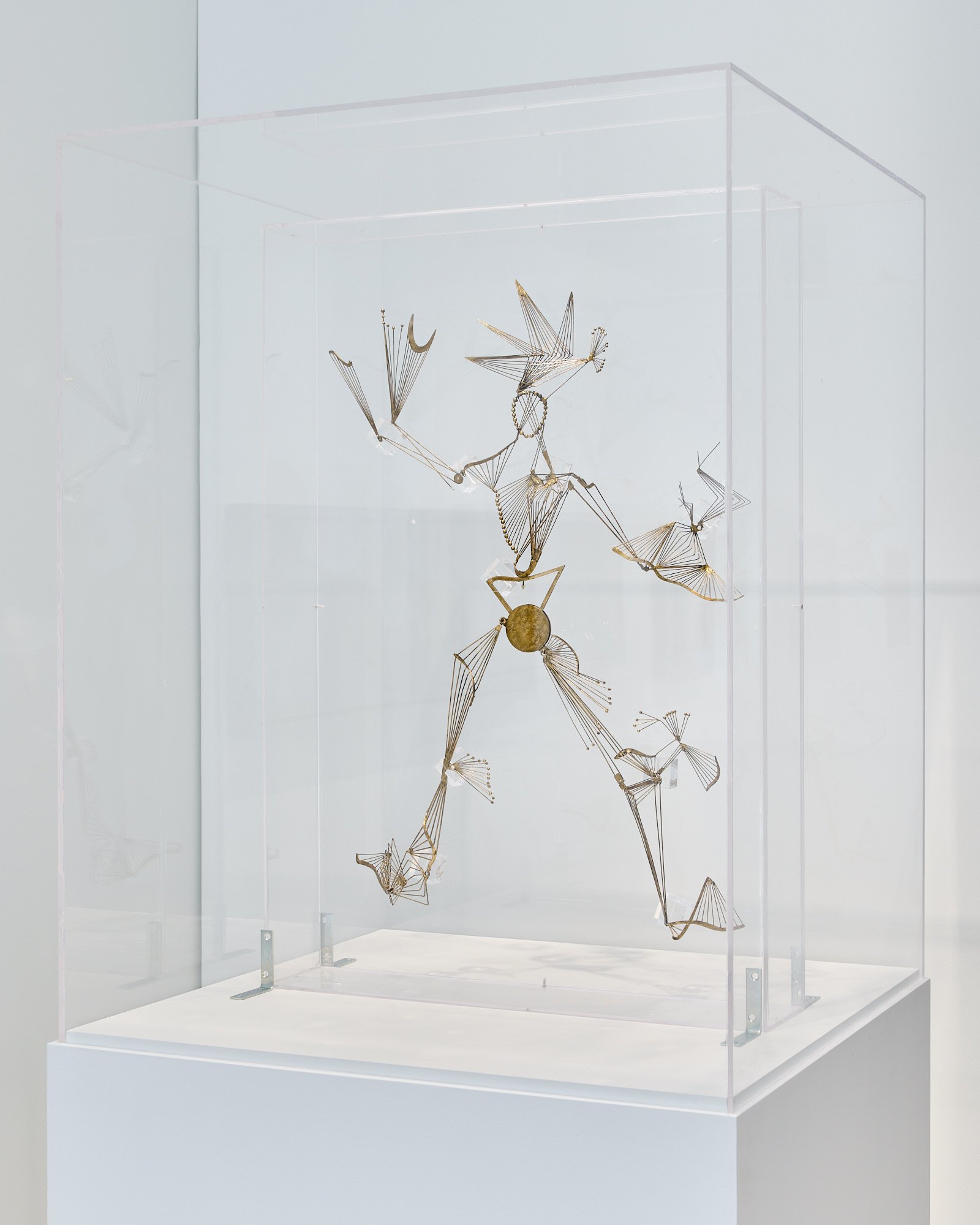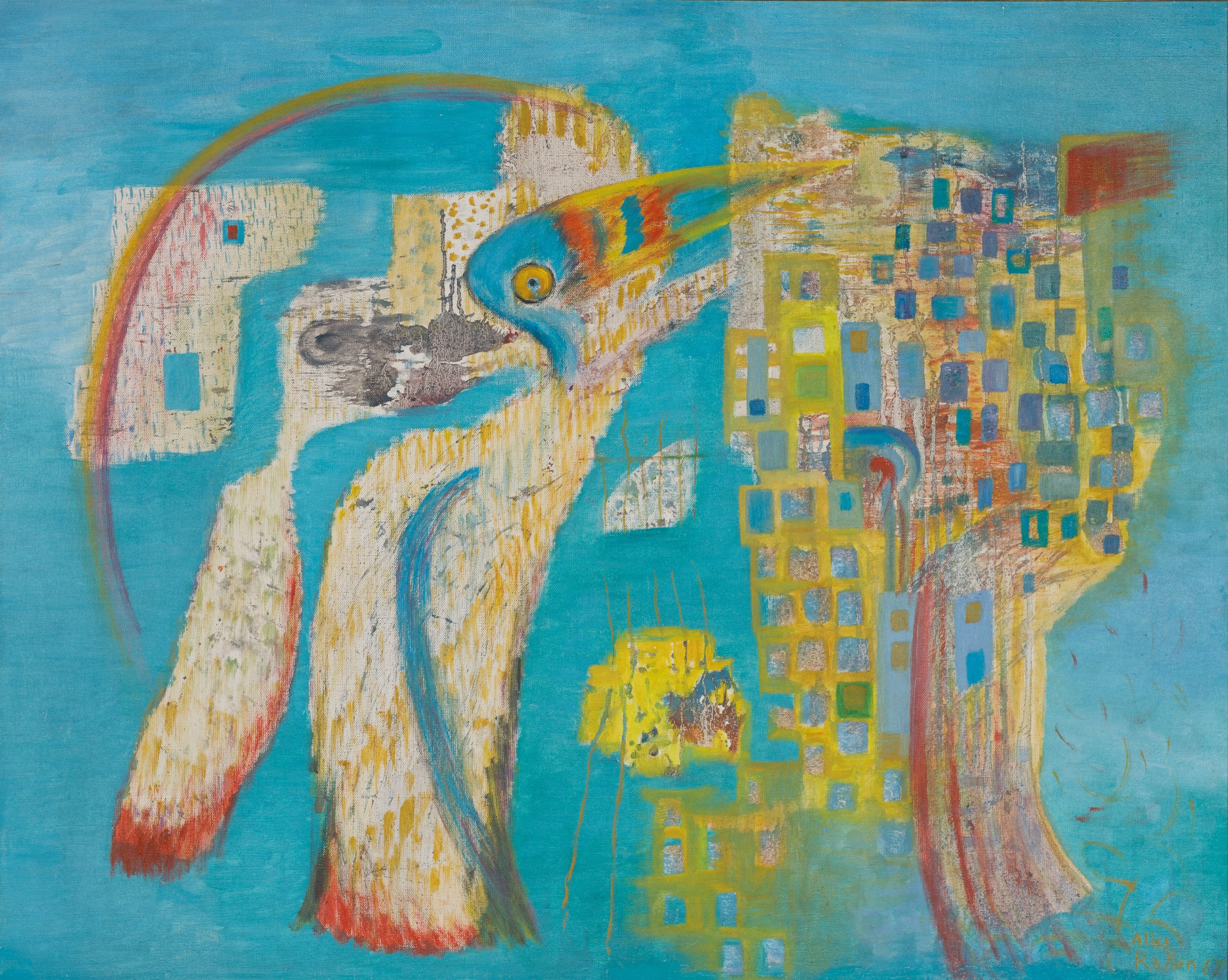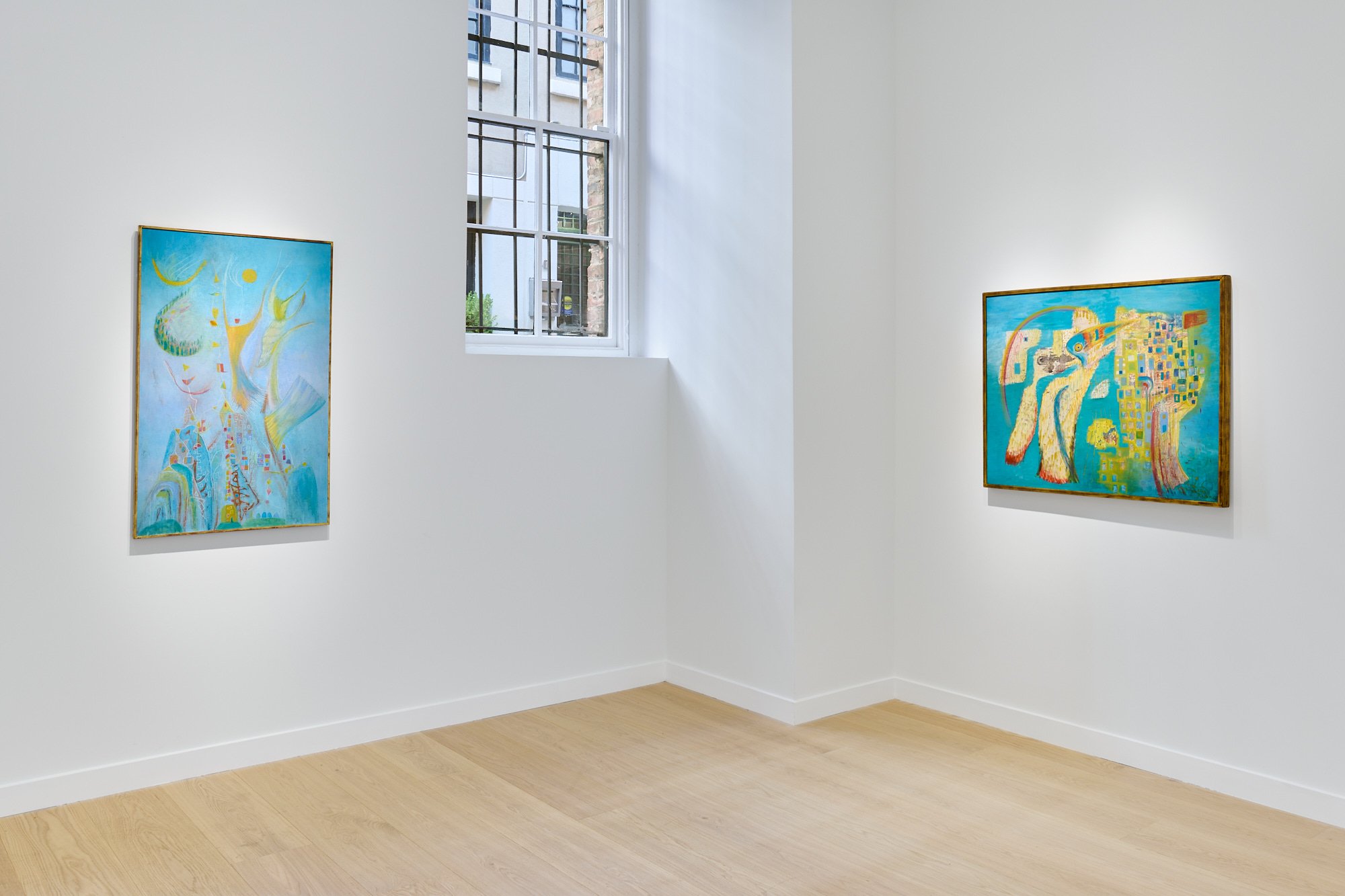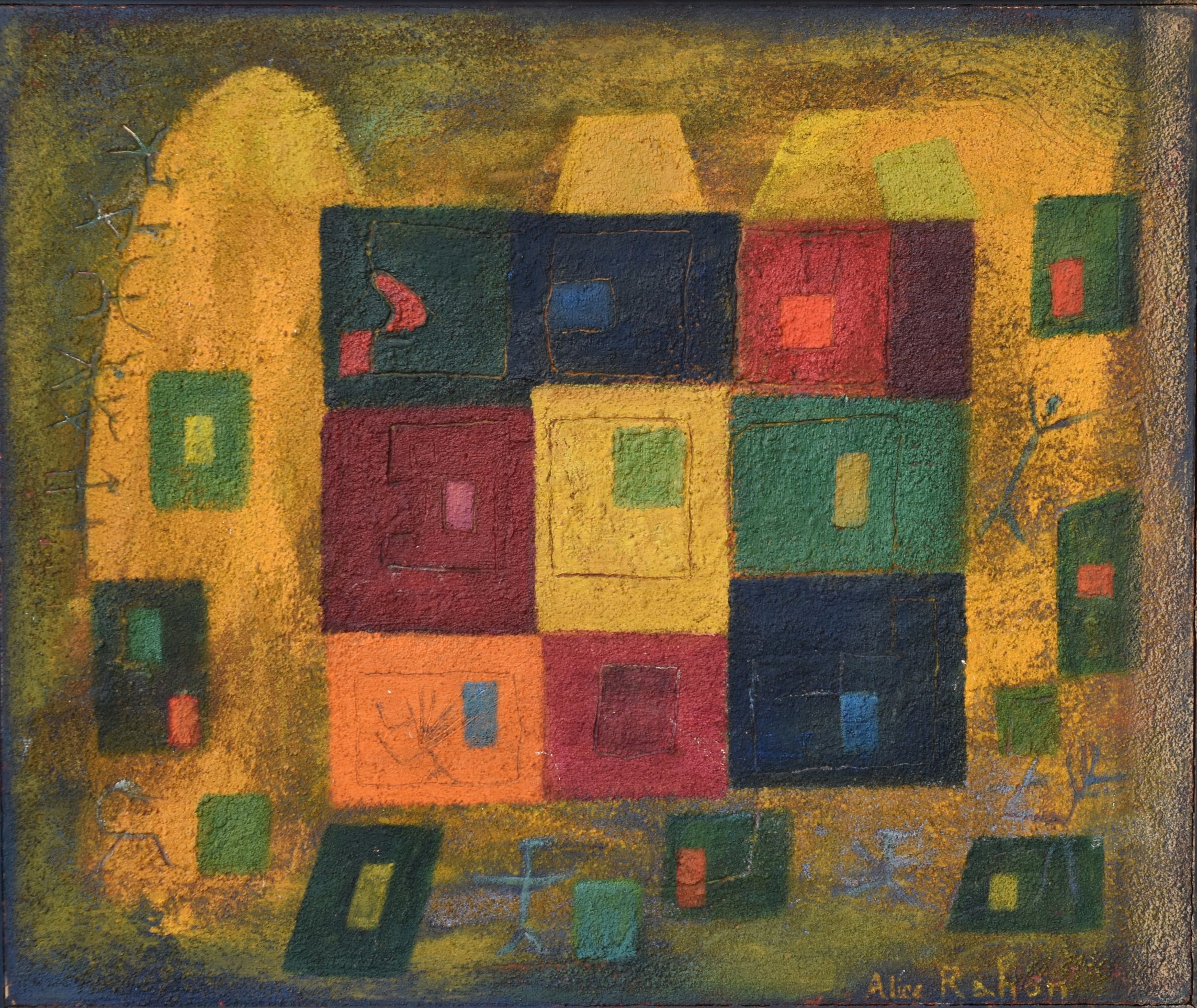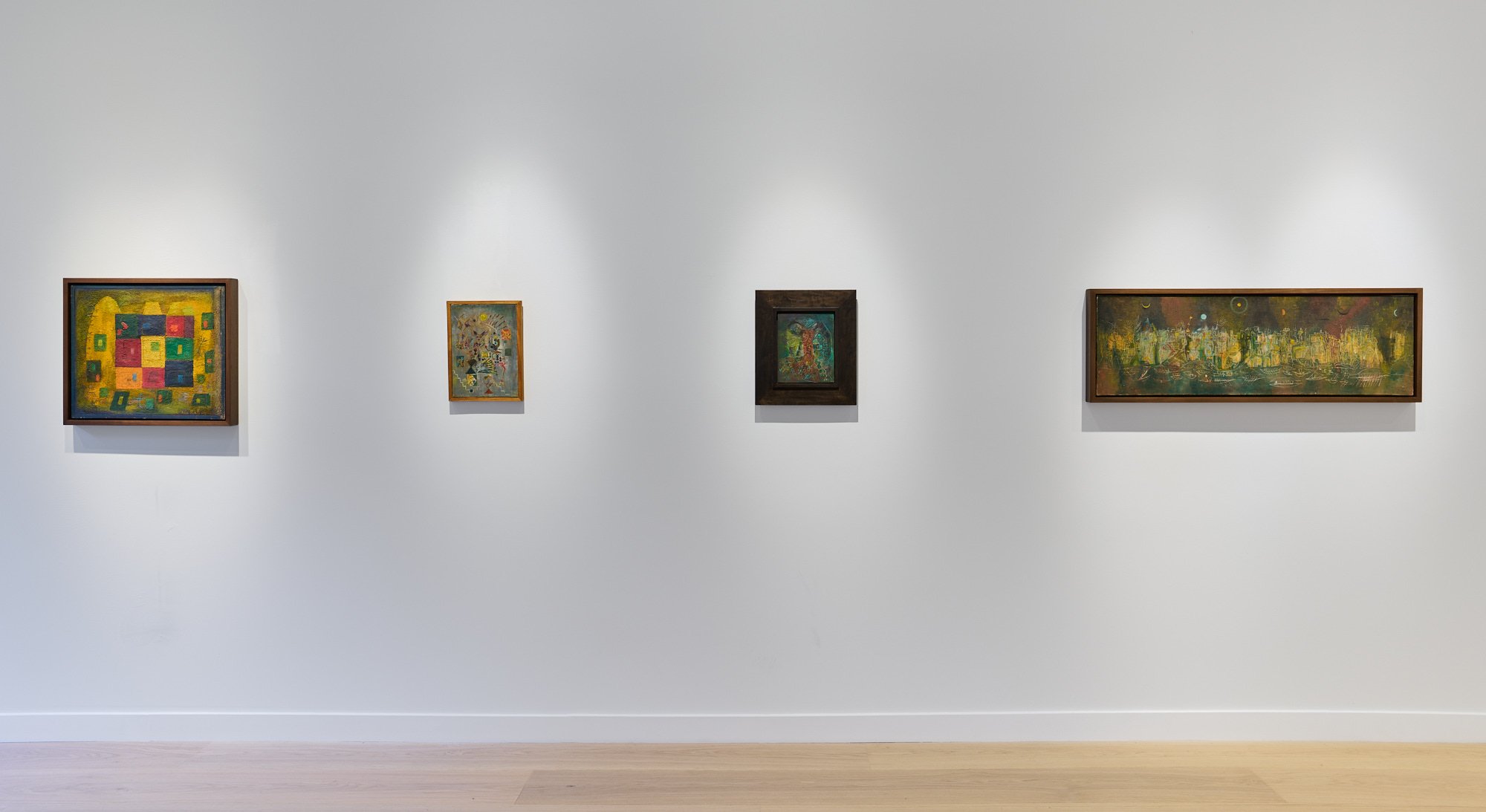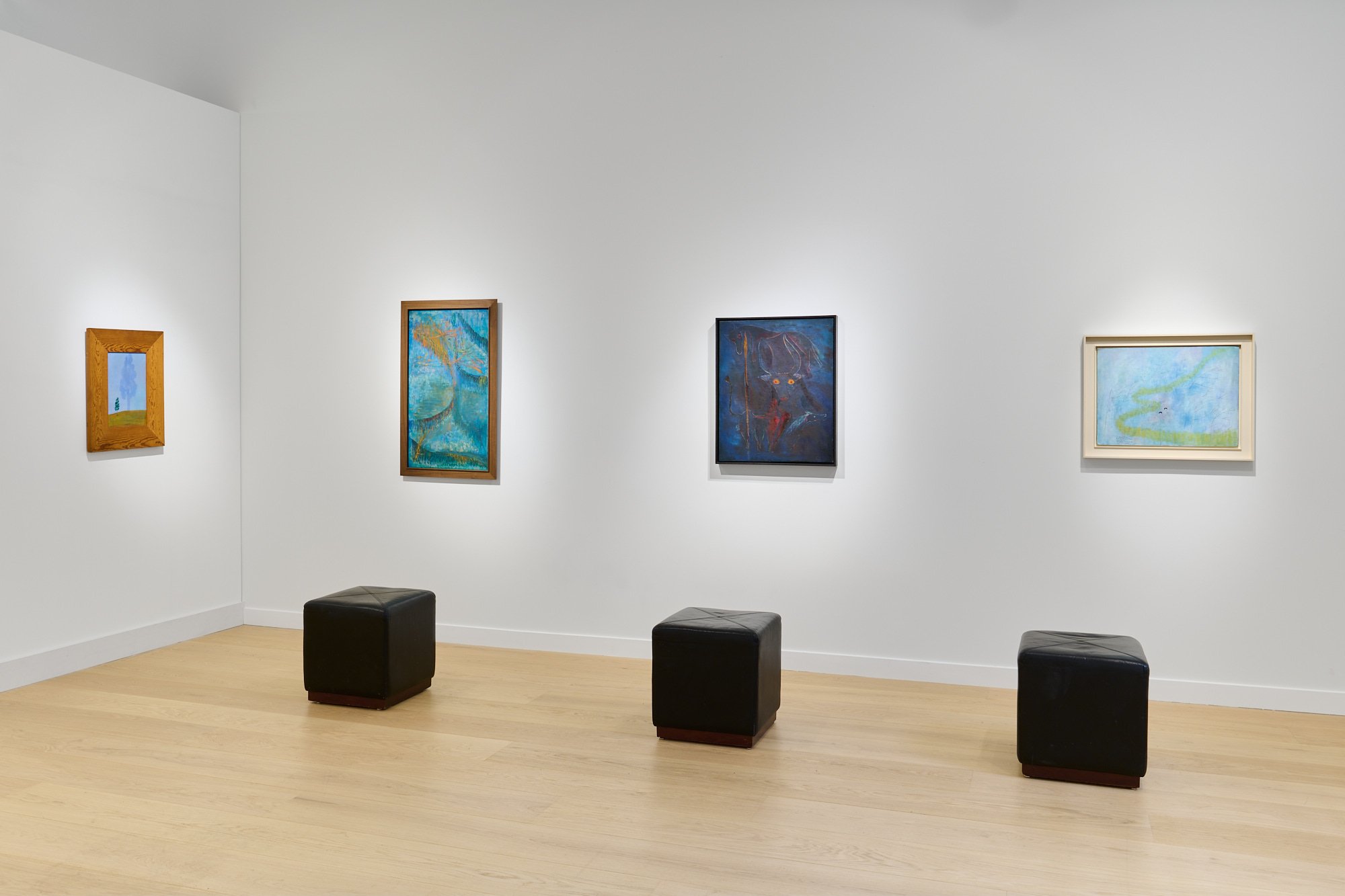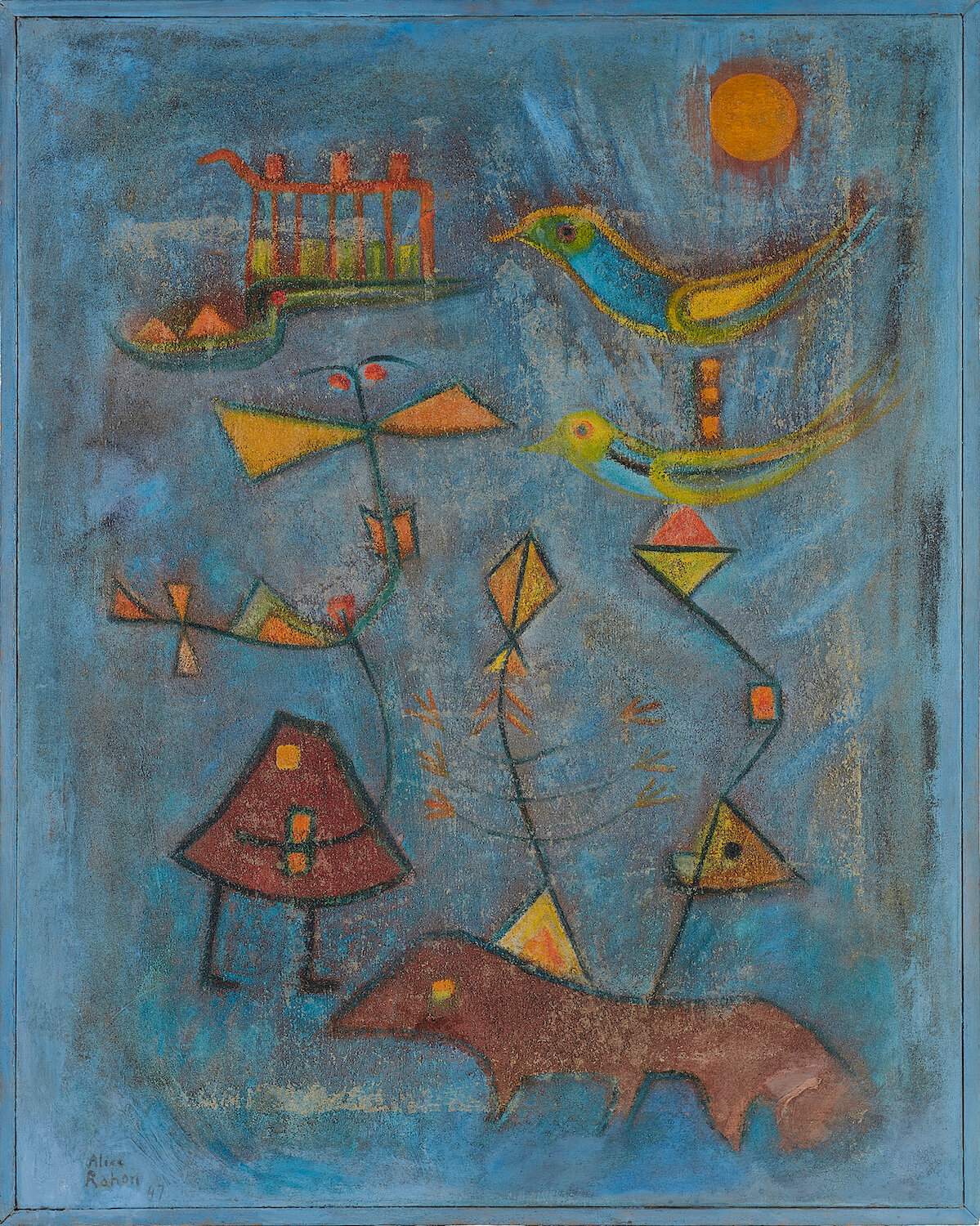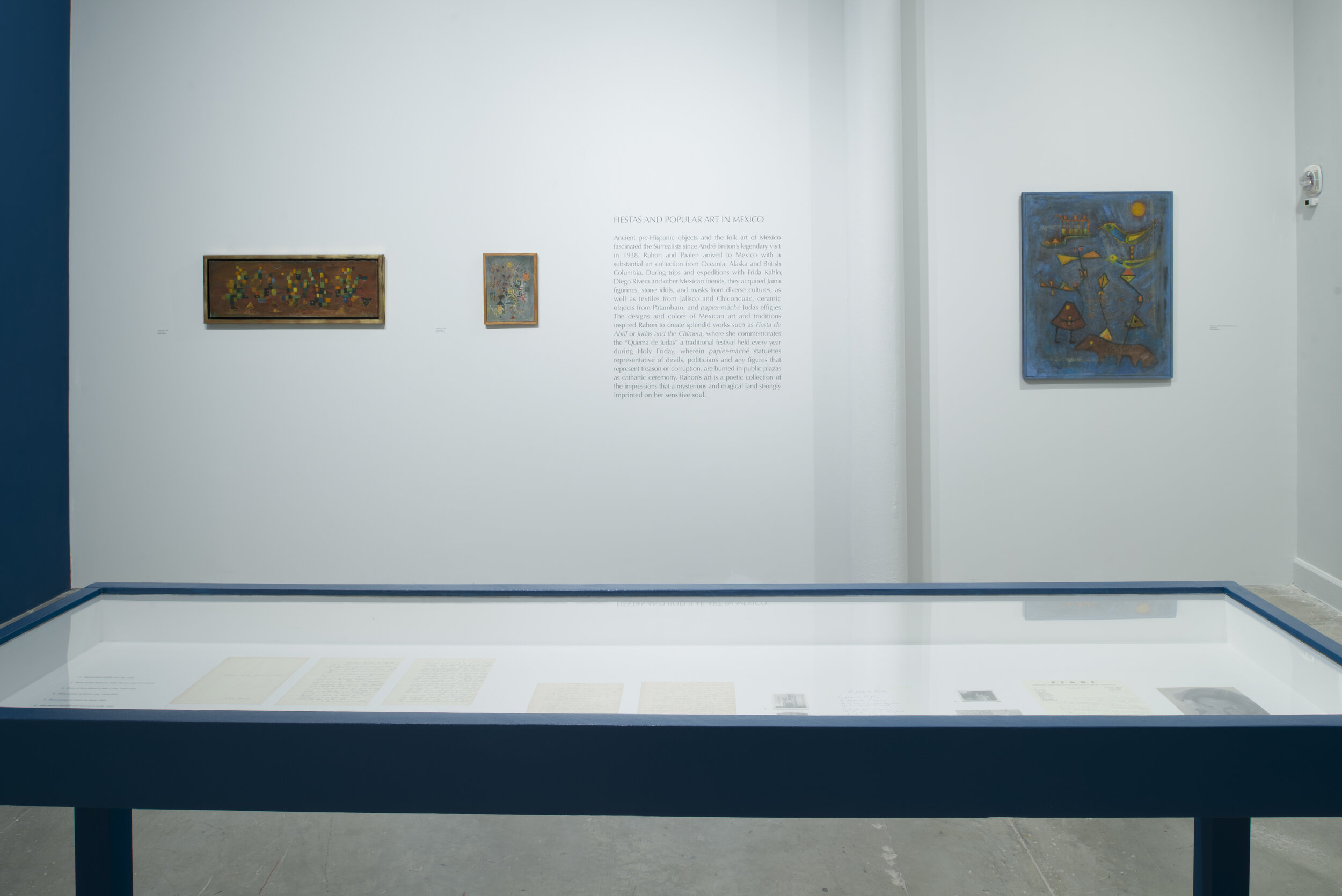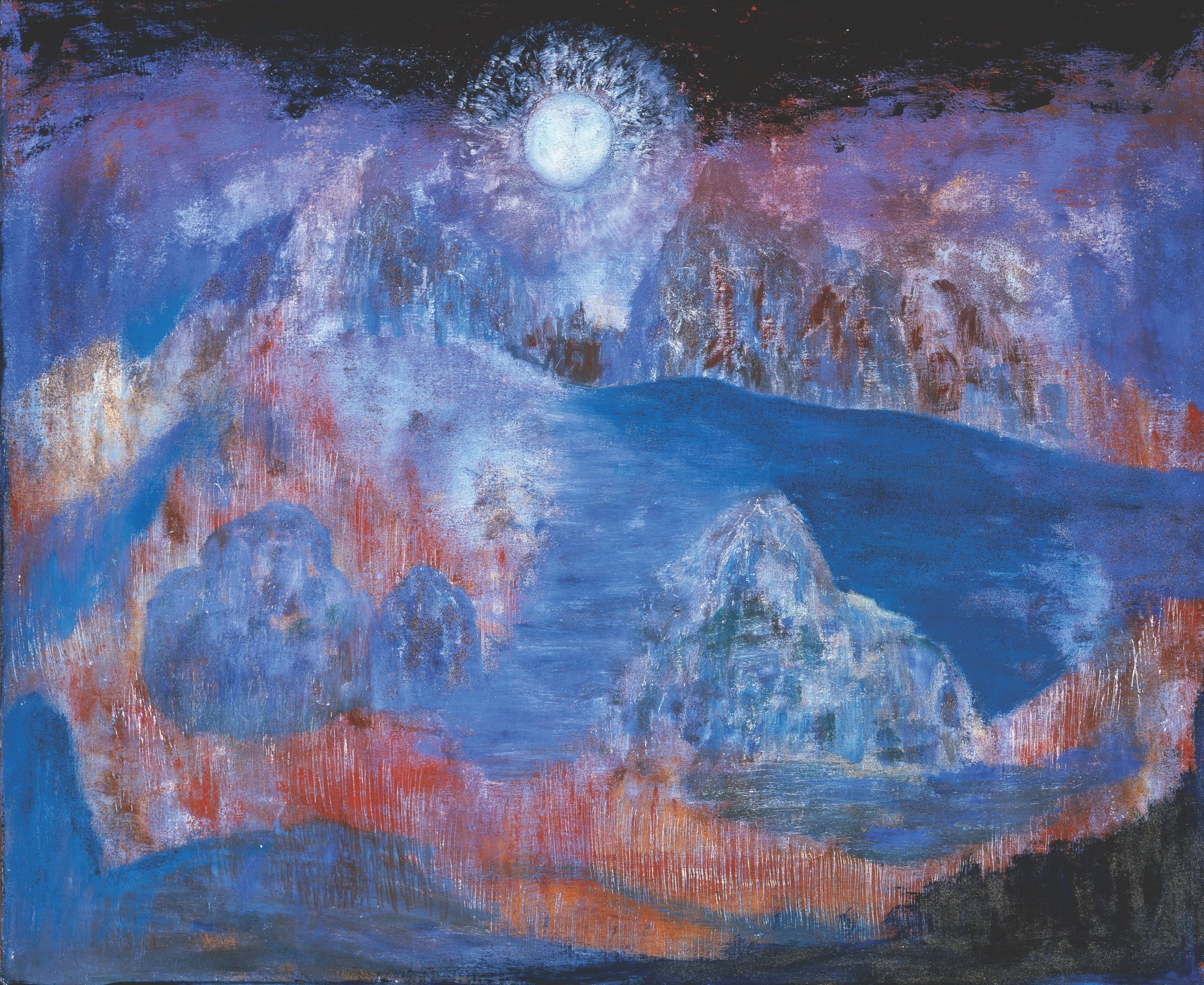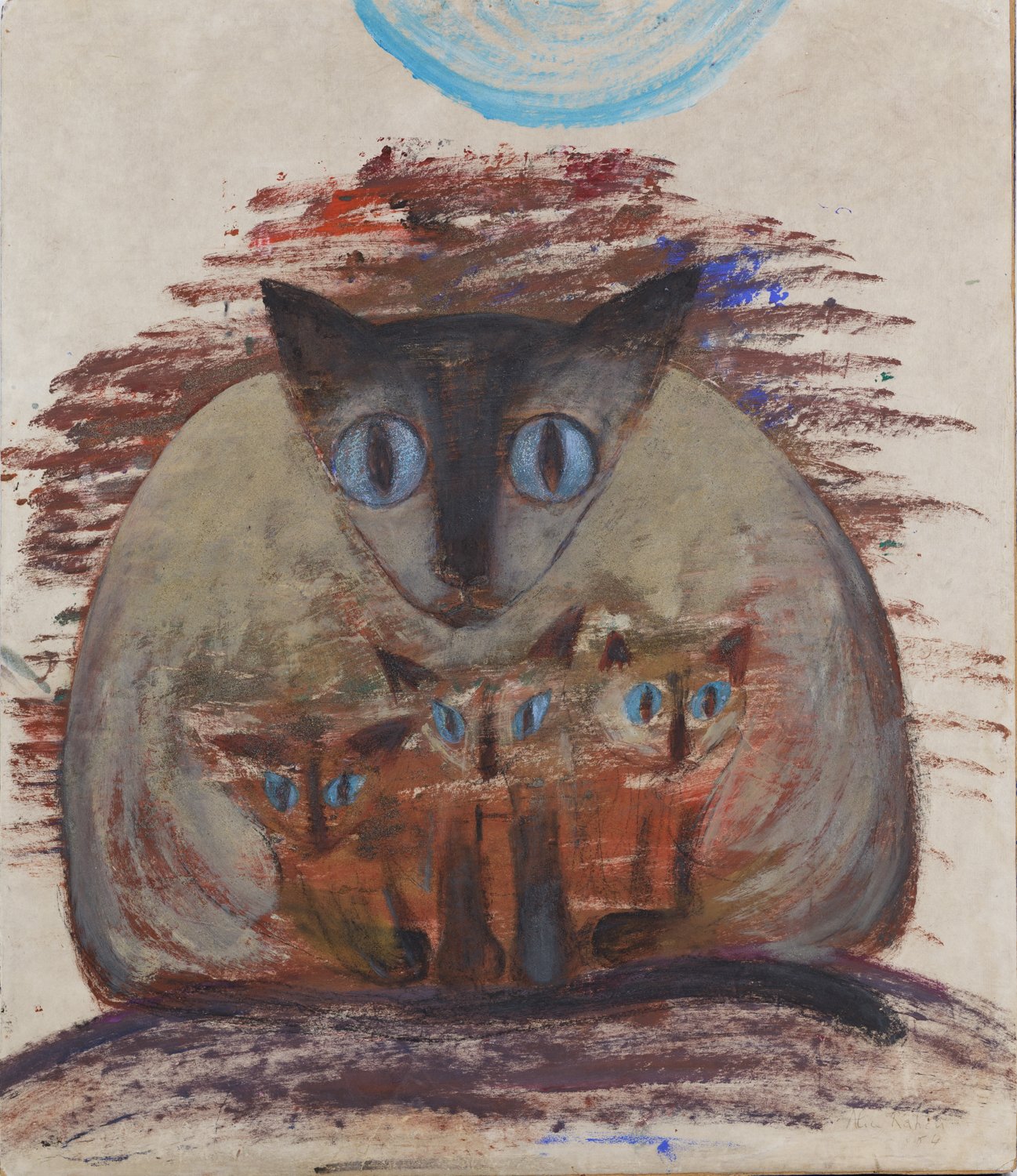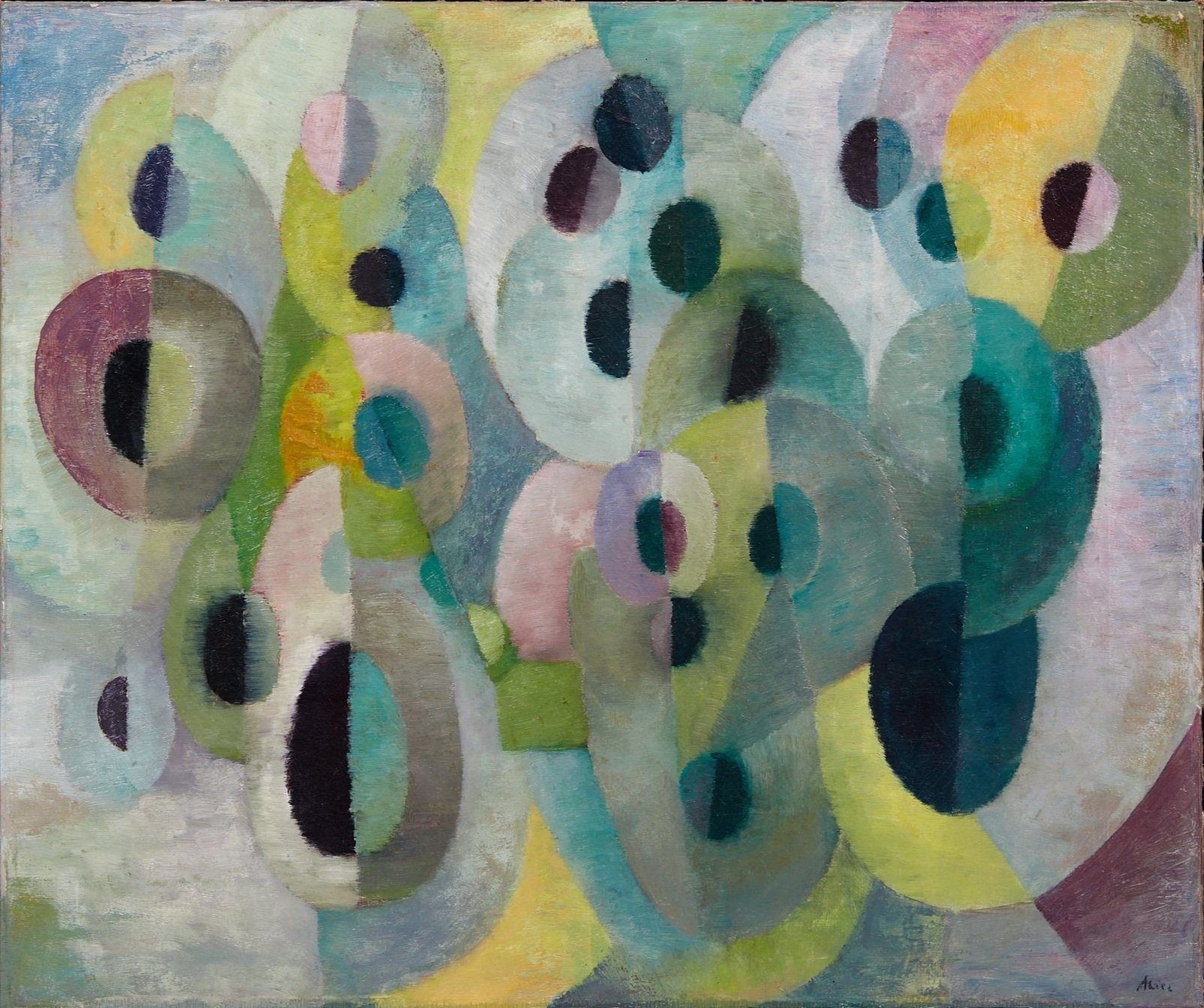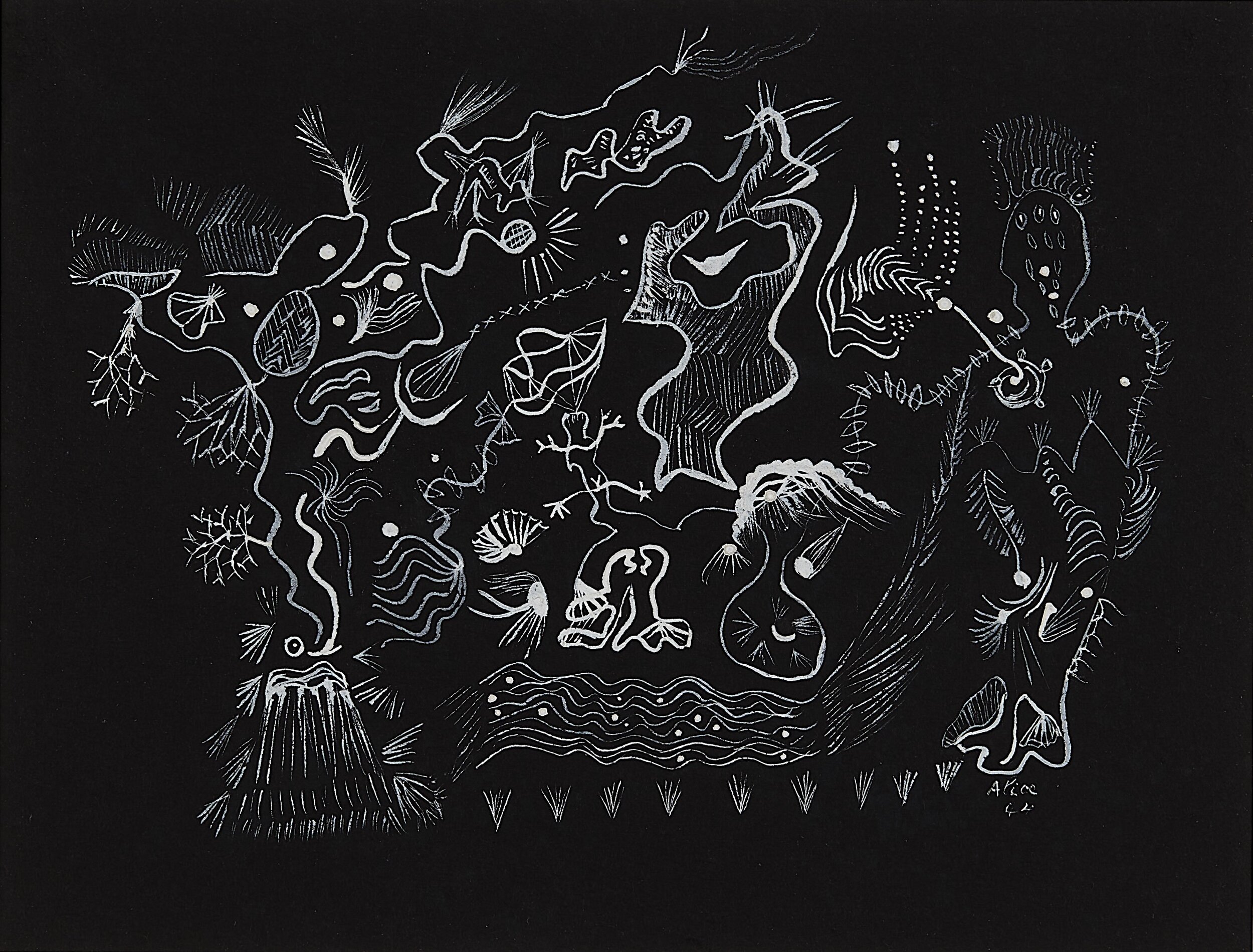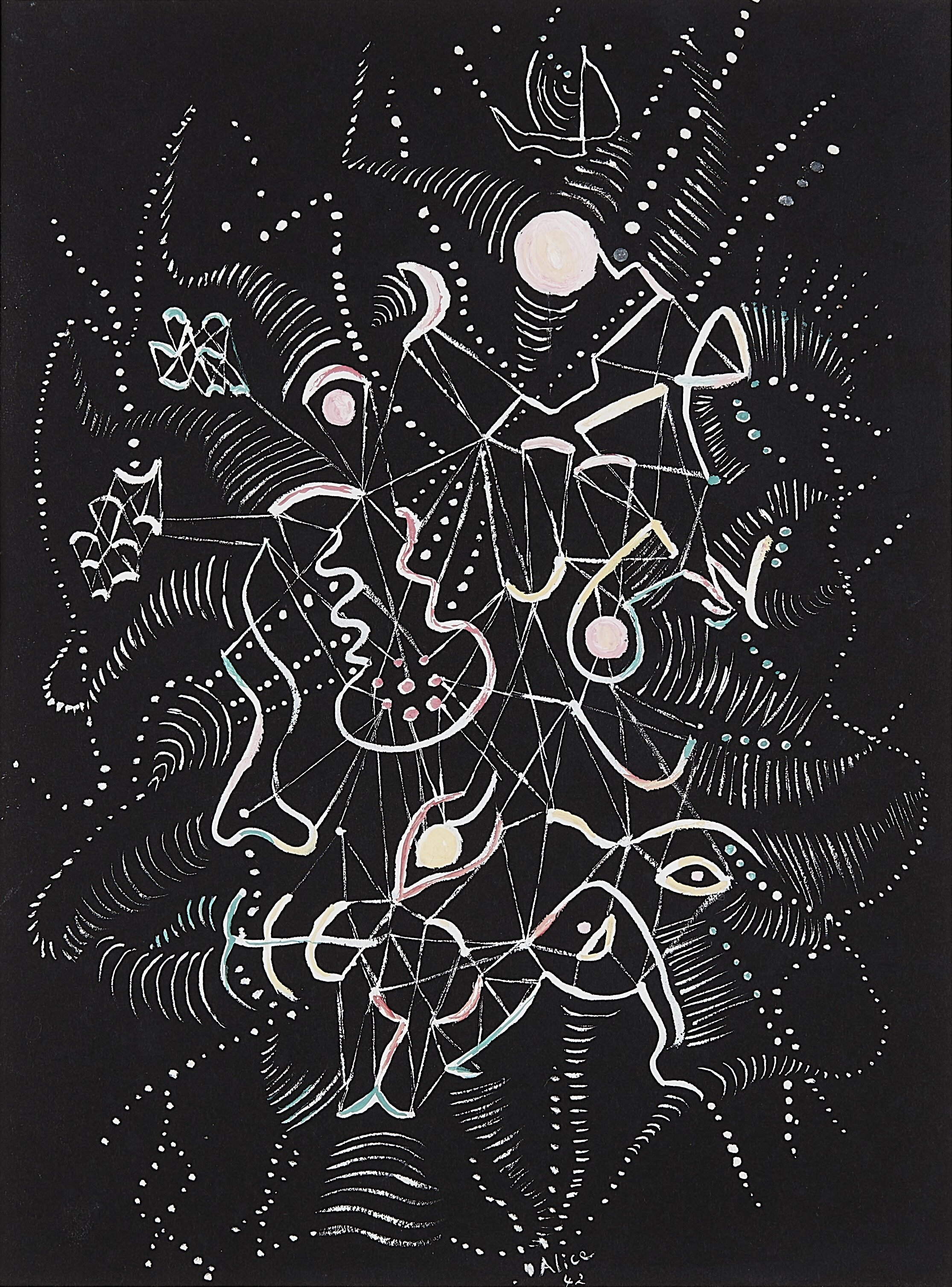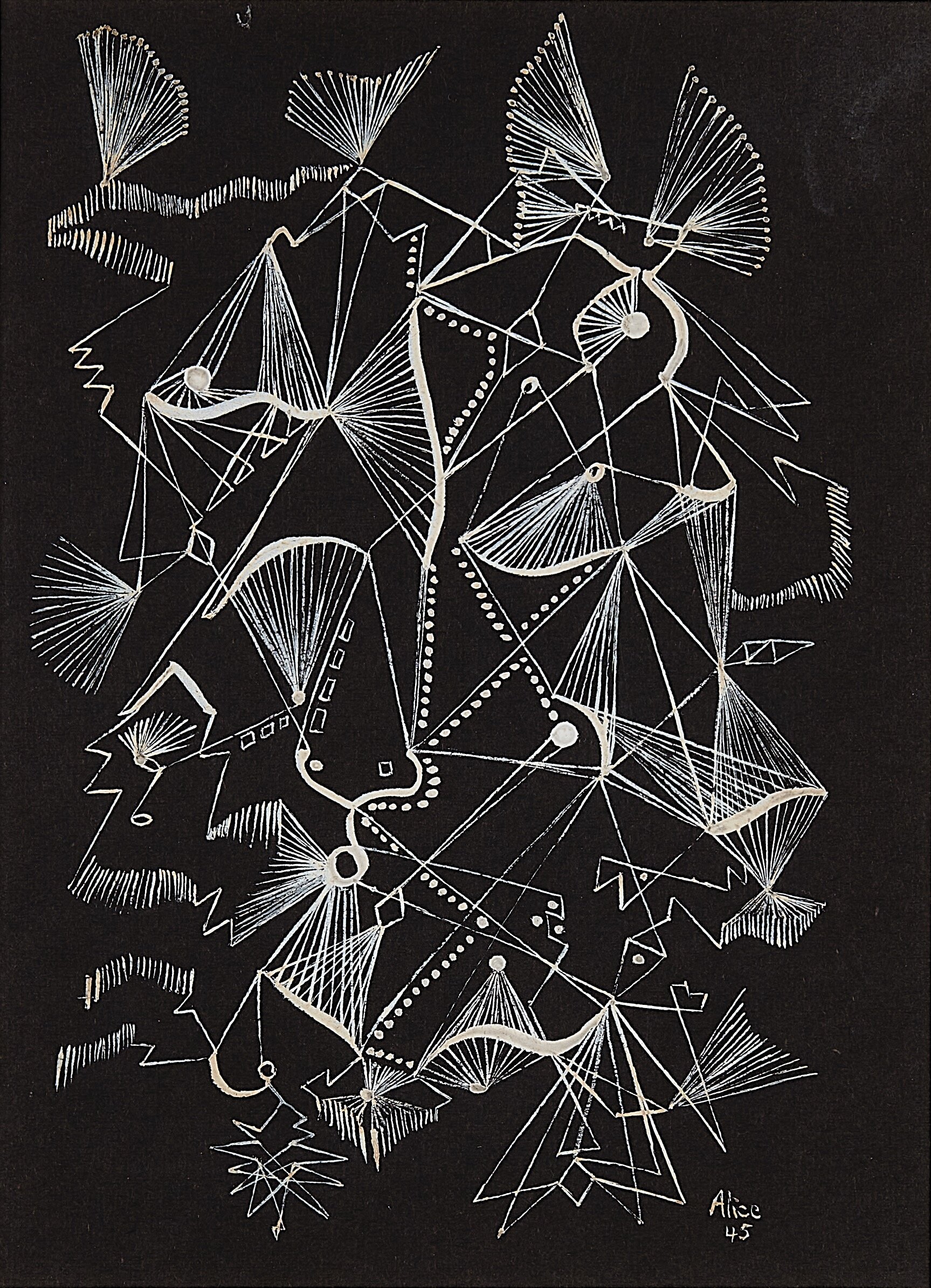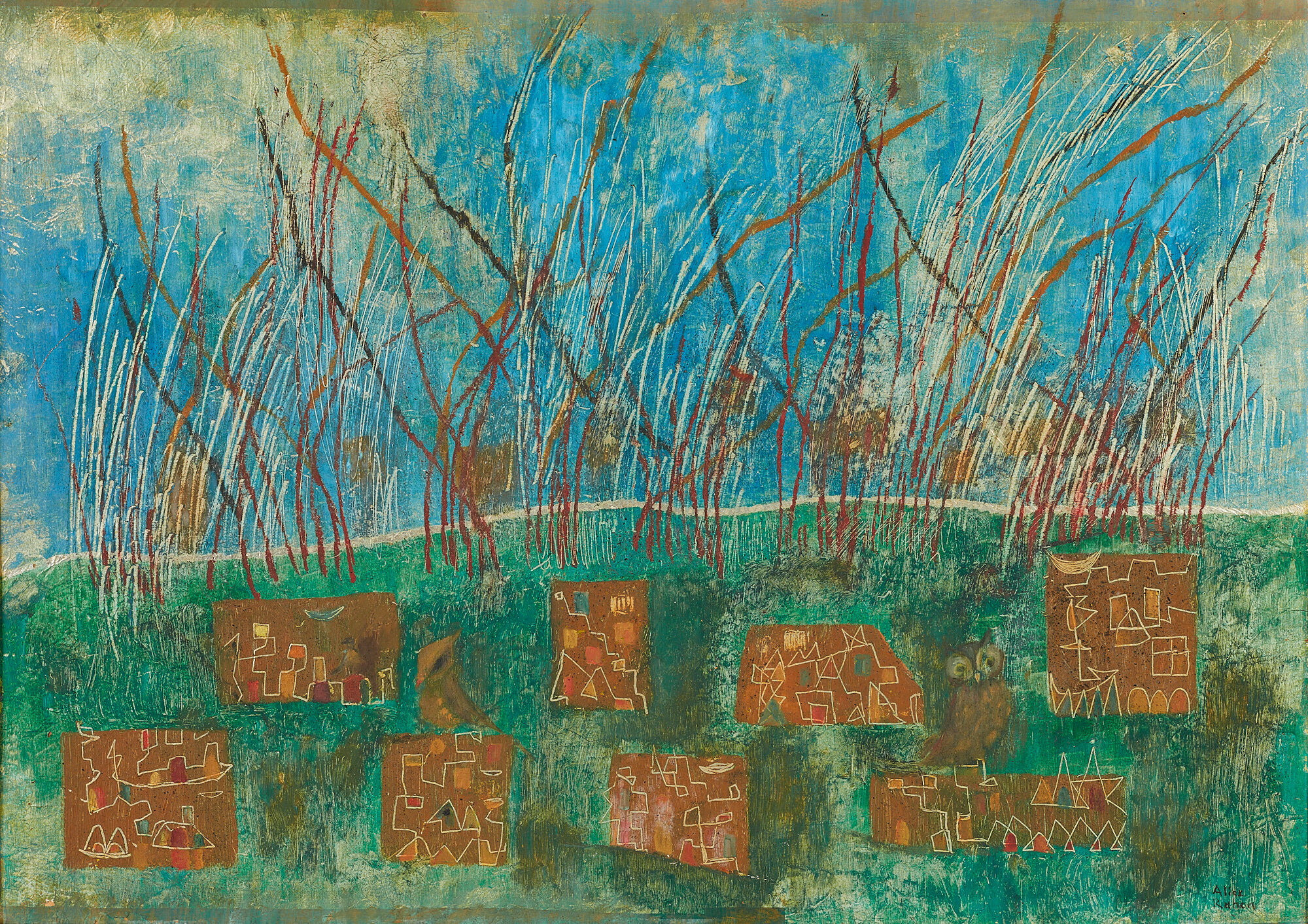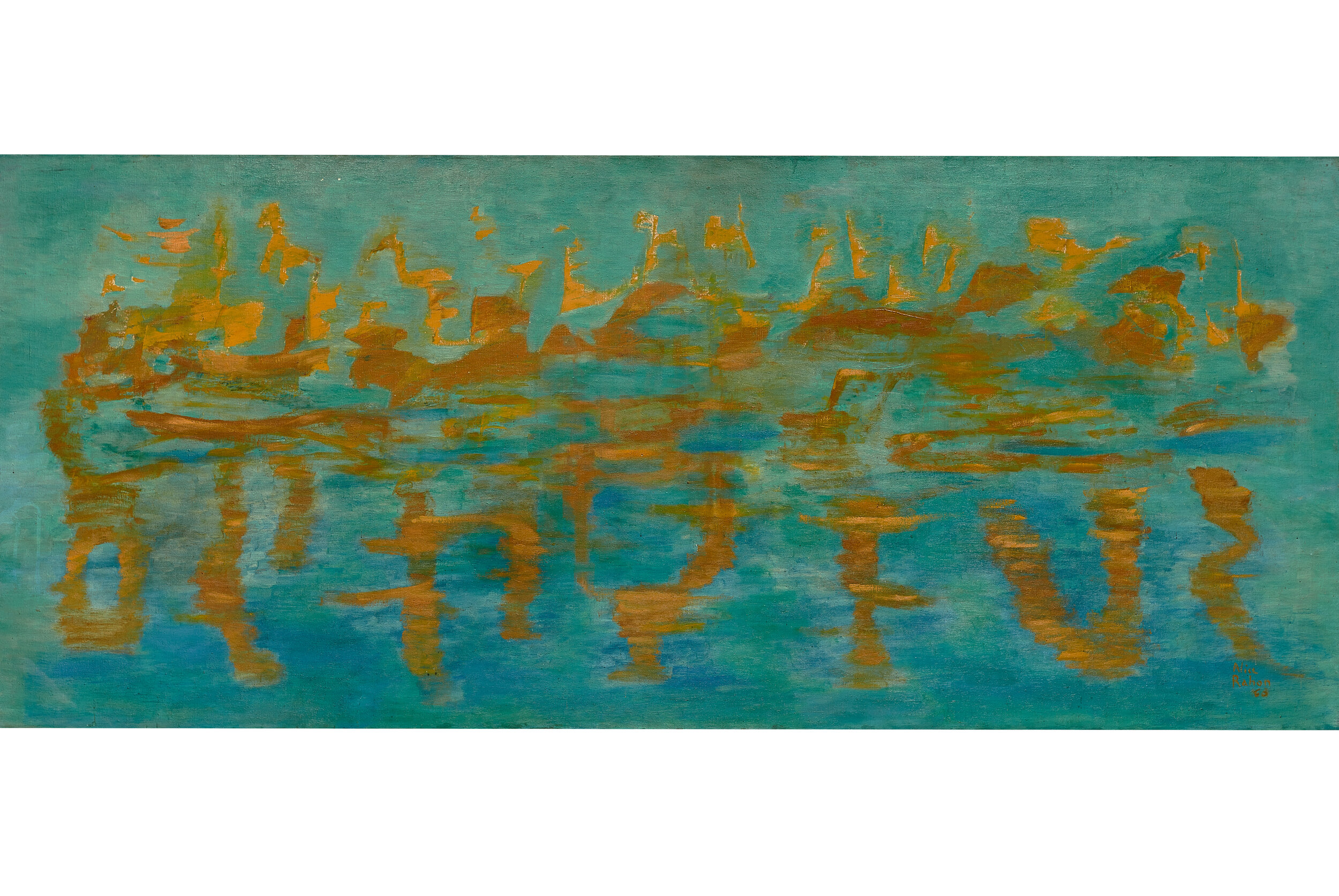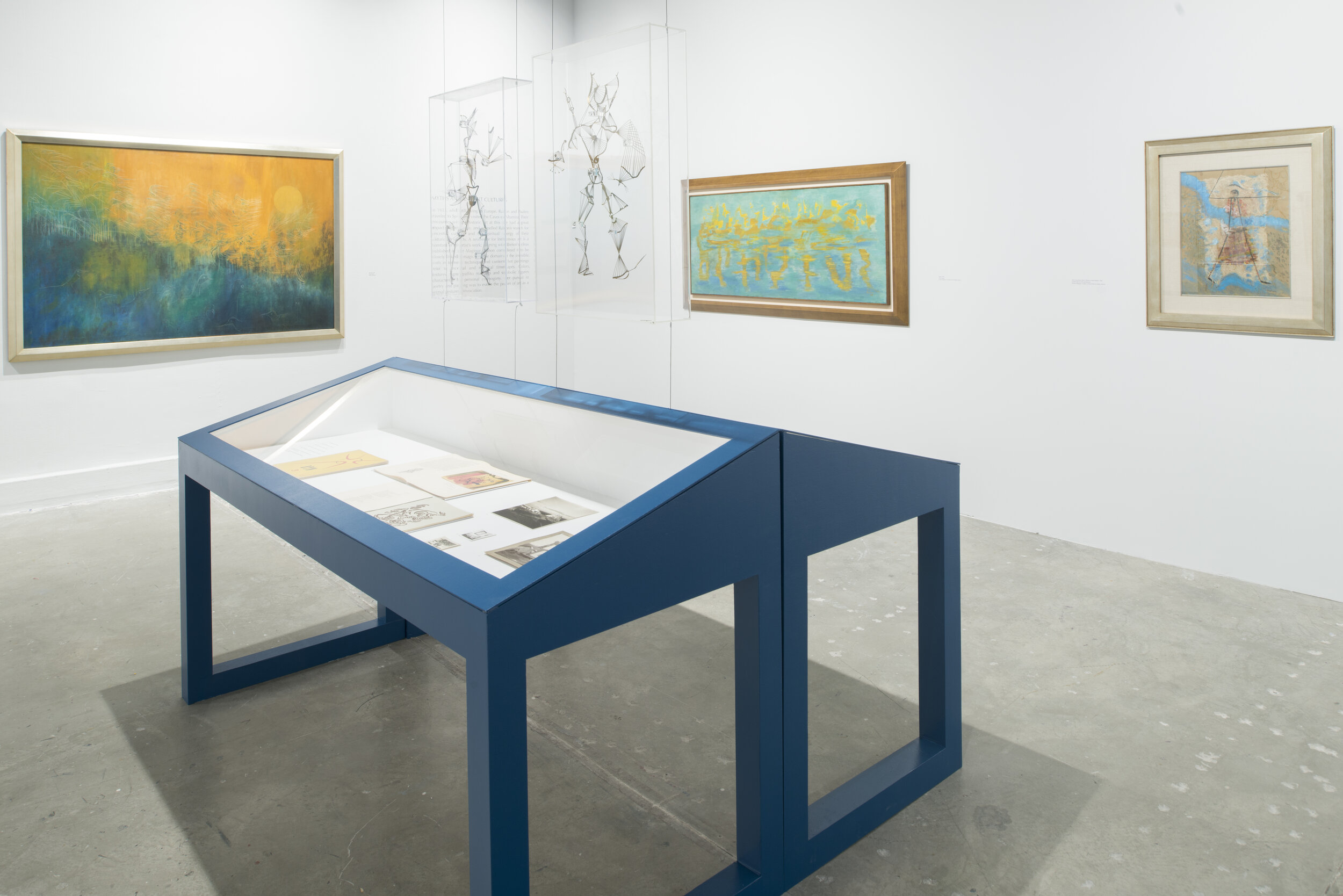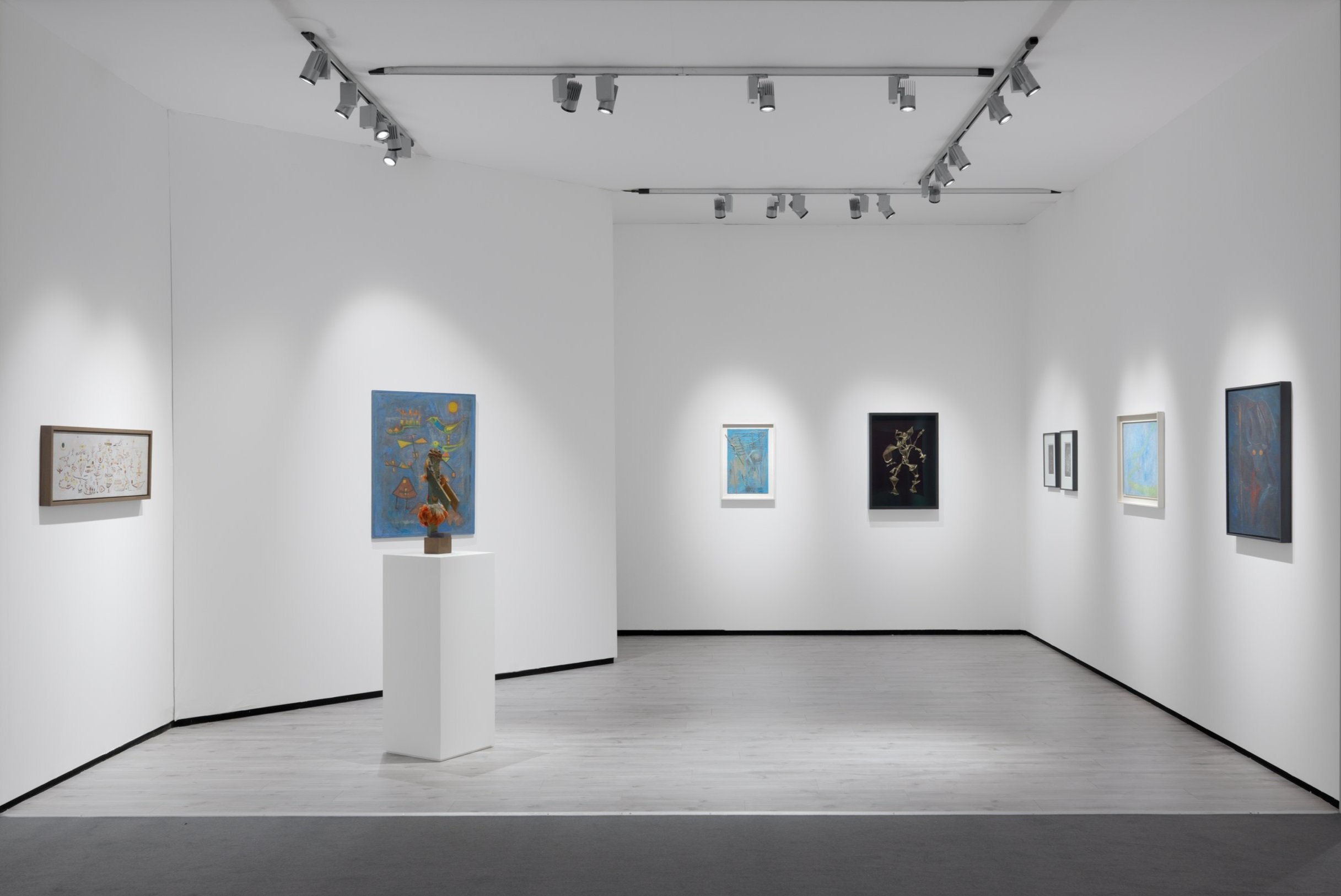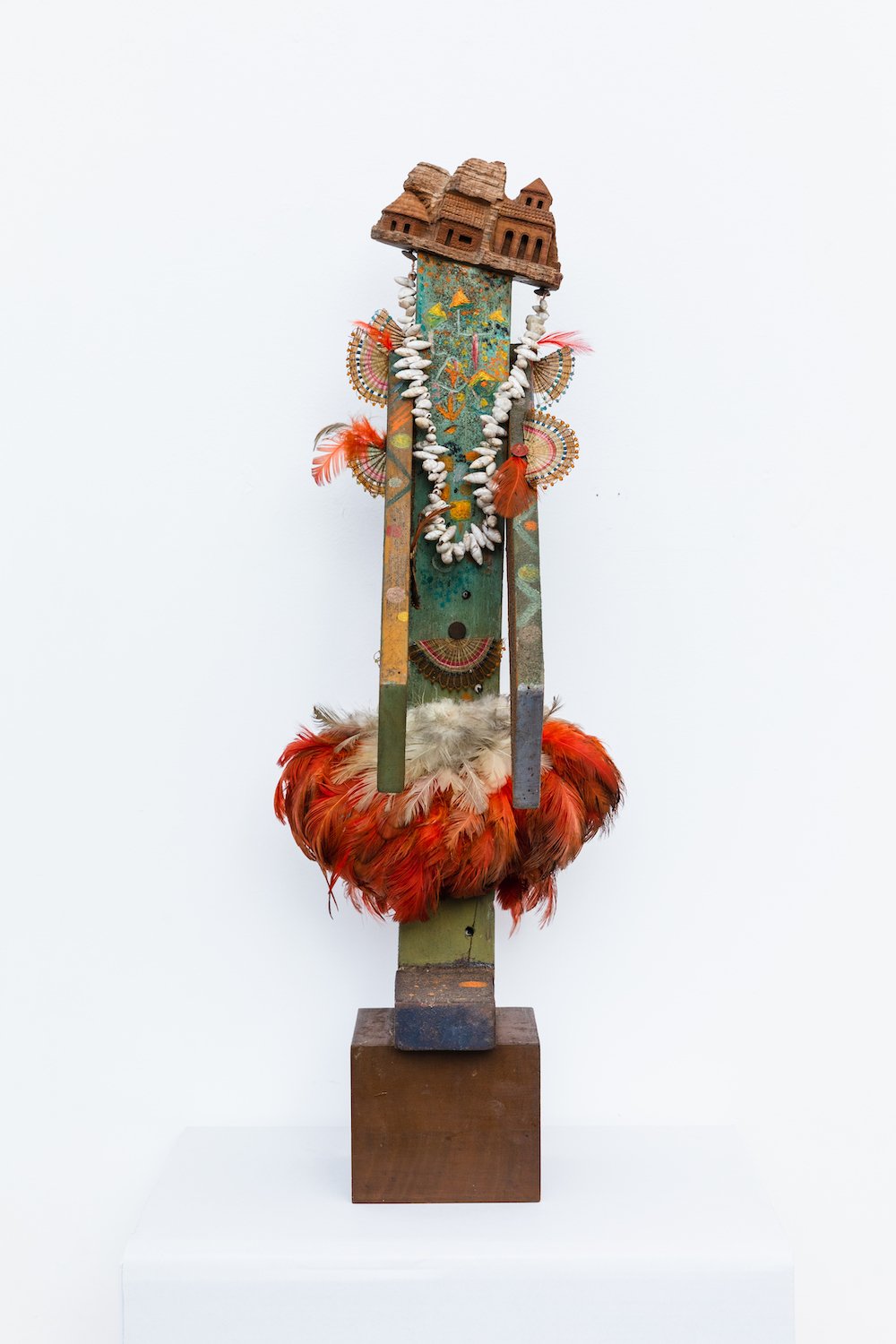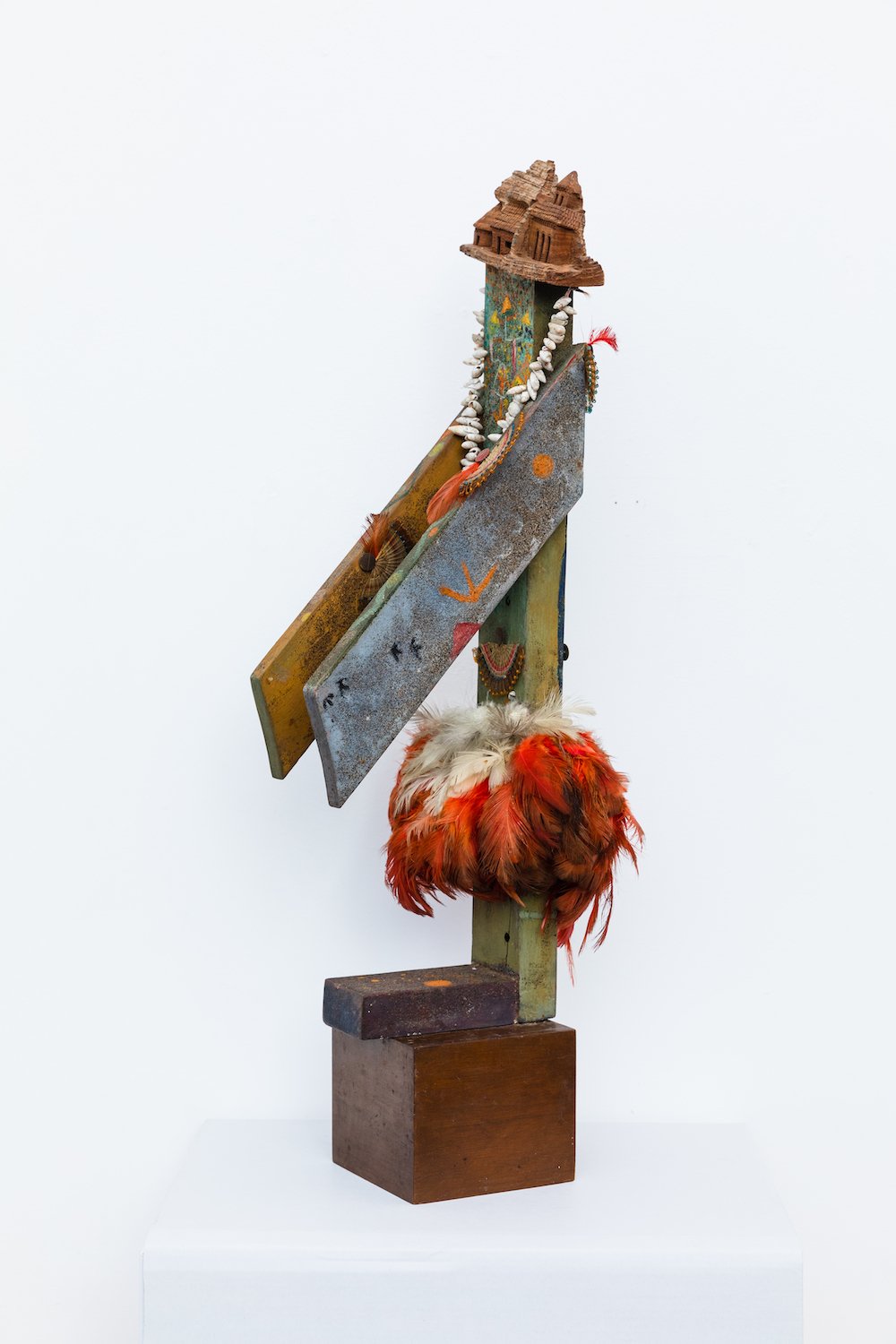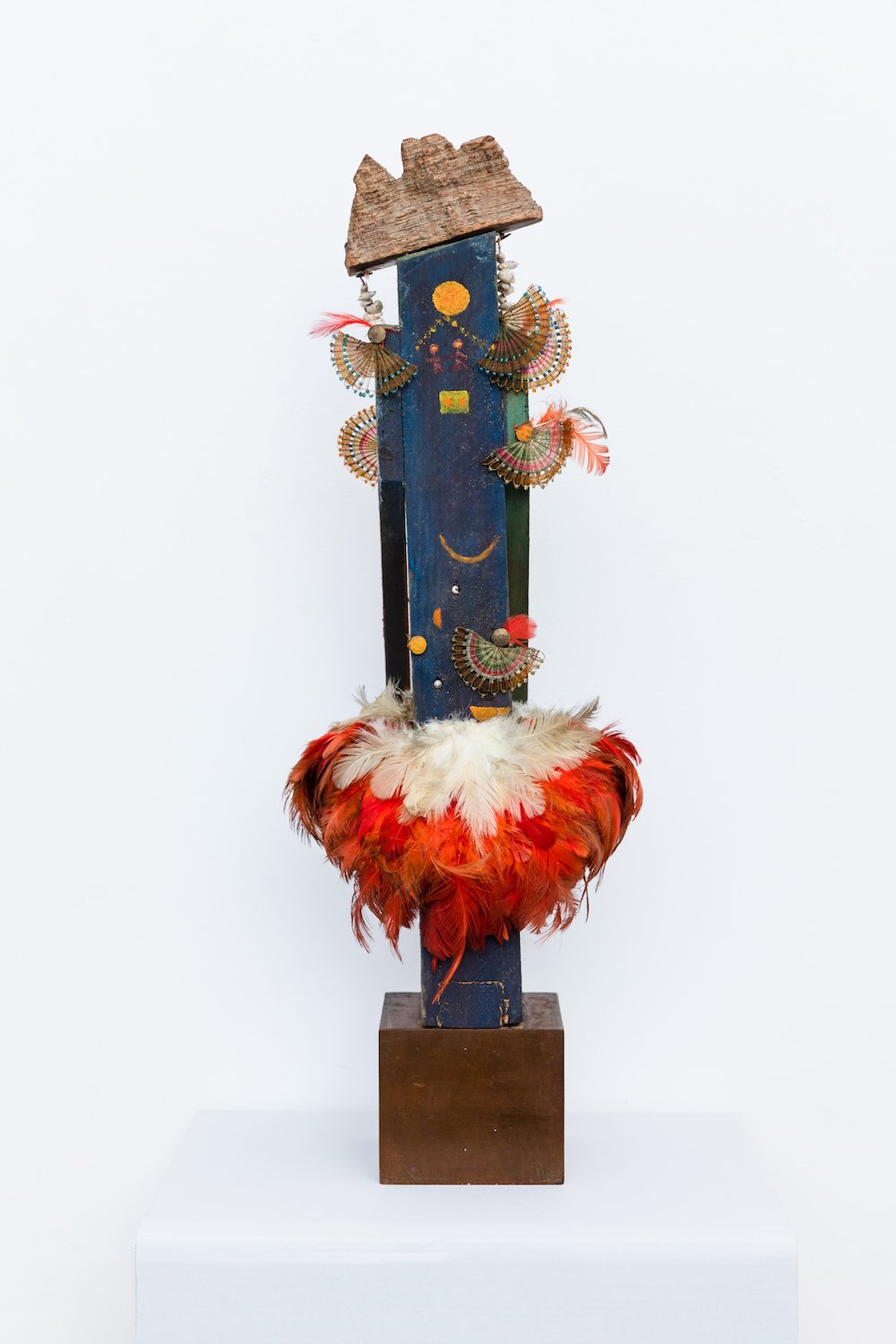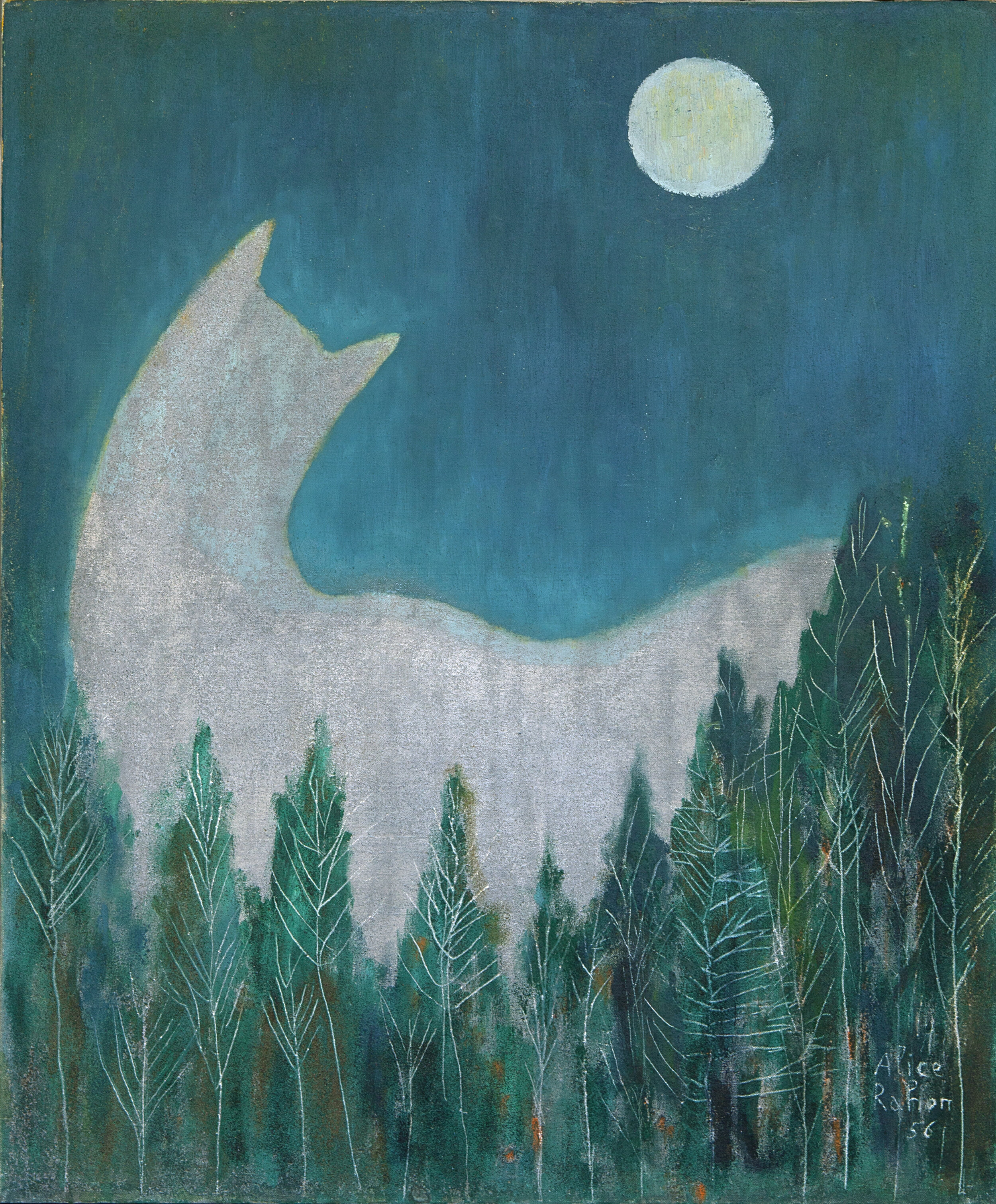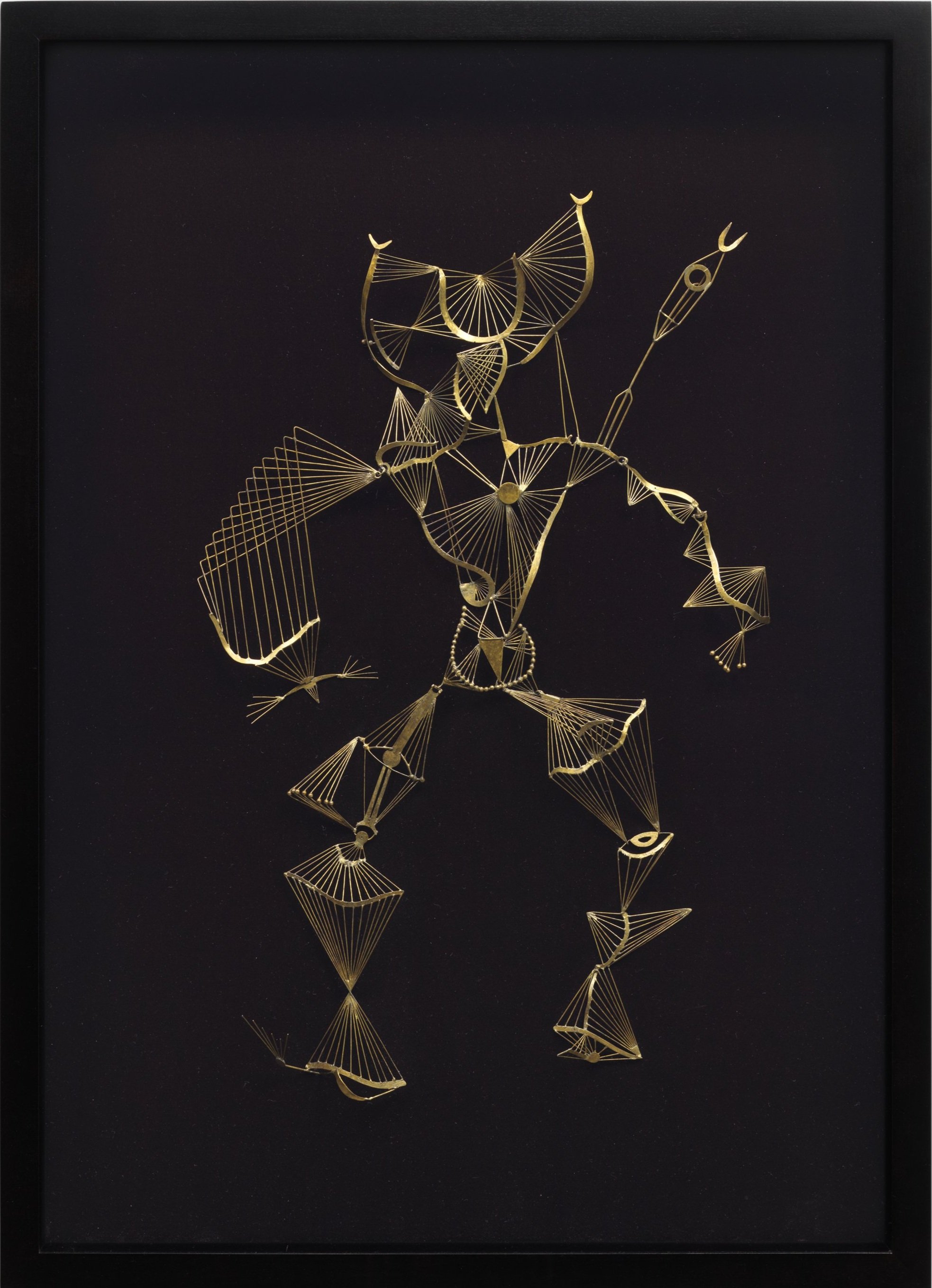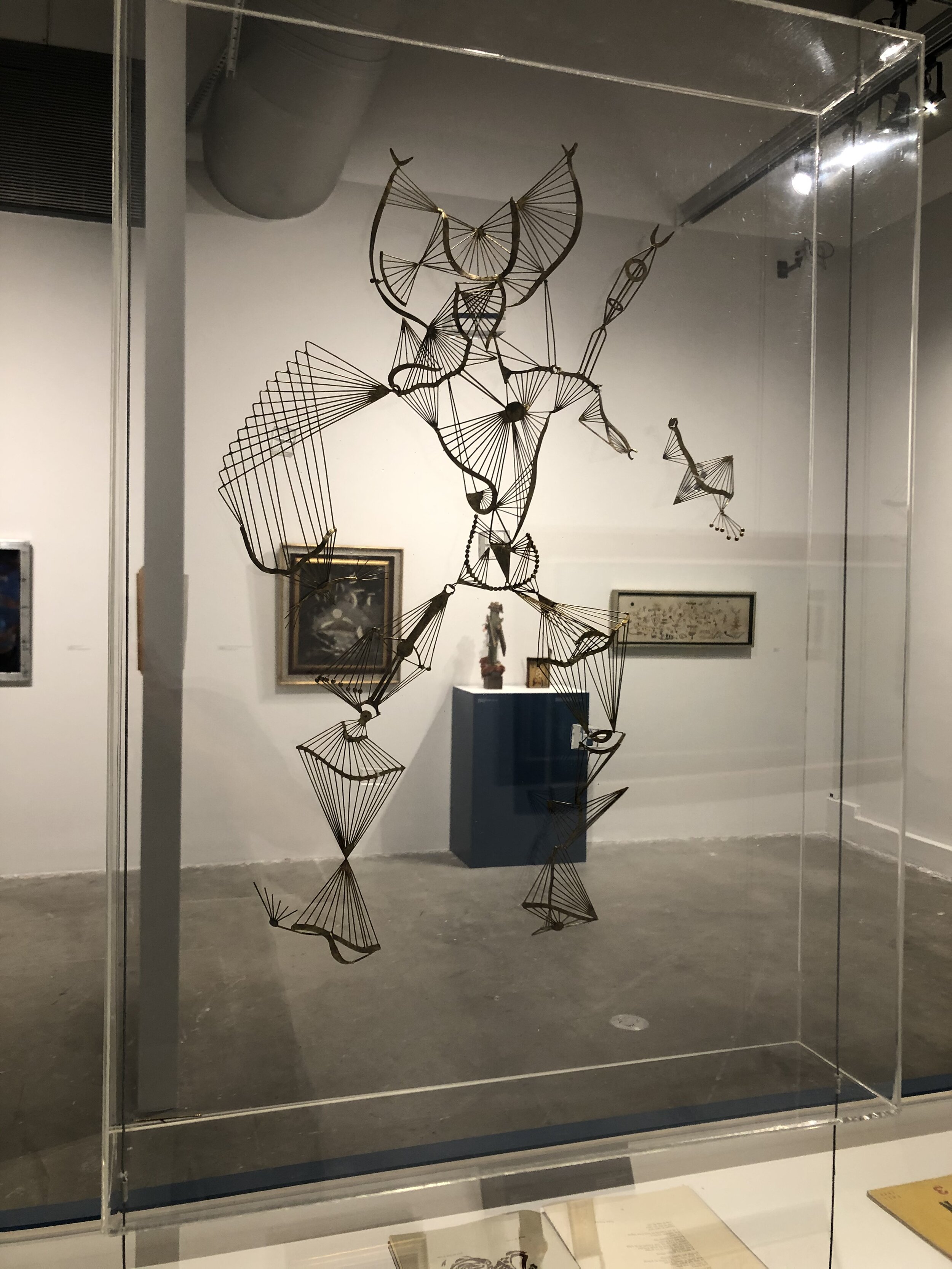Alice Rahon
Alice Rahon, La cuadra, Oil and sand on canvas, 18 x 21 1/2 in (46 x 55 cm), 1942-1950
“In earliest times painting was magical; it was the key to the invisible. In those days the value of a work lay in its powers of conjuration, a power that talent alone could not achieve. Like the shaman, the sibyl and the wizard, the painter had to make himself humble, so that he could share in the manifestation of spirits and forms.”
BIOGRAPHY
Alice Rahon (née Alice Marie Yvonne Philippot) was born in Chenecey-Buillon, France, on June 8, 1904. After publishing three volumes of poetry, she turned to the visual arts at the age of thirty-six and spent her mature years working almost exclusively as a painter. Rahon died in Mexico City in 1987, a naturalized citizen of Mexico.
The visual vocabulary Rahon created over the course of her career as a painter can be seen as a fulfillment (rather than an abandonment) of her early commitment to language. Like her poetry, Rahon’s paintings are thick with mythology and magic, memory and meaning. Compelled as deeply by prehistoric cave paintings as by the Surrealist milieu in which she lived and worked, Rahon wove symbols, colors, and textures together in delicate combinations of figuration and abstraction. Modern analogs to the petroglyphs that inspired them, Rahon’s paintings are expressions of an artistic sensibility that reaches from the blank canvas of the present into the cavernous recesses of prehistory.
Little is known of Rahon’s childhood, but a brief account of her early years reveals an independent and charismatic young woman of prodigious talent. At some point during her twenties she moved to Paris, where she created hats for the Surrealist-influenced fashion designer Elsa Schiaparelli. She was introduced to Man Ray, for whom she modeled, and became friends with Joan Miró. In 1931 she met the Austrian painter Wolfgang Paalen (1905-1959), who brought her into the circle of Surrealists led by André Breton. She and Paalen were married in 1934.
Writing poetry under her married name, Alice Paalen, she spent the 1930s amongst the Parisian Surrealists and associated artists. In 1936, Breton arranged for the publication of her first book, À même la terre (On the Bare Ground), with an engraving by Yves Tanguy. A second collection of poetry, Sablier couché (Hourglass Lying Down), appeared in 1938 with an etching by Miró. Her third and final volume of poetry was published in 1941 as Noir animal (Animal Black), with a portrait of her by Paalen. Hearing of her nascent interest in prehistoric art, Miró had suggested in 1933 that she and Paalen visit Altamira, Spain. Her encounter with the polychromatic cave paintings of Altamira would prove formative to Rahon’s later development as a visual artist.
A second encounter was equally transformative. In 1939, Rahon met Frida Kahlo in Paris, who invited her to Mexico. With the threat of war on the horizon, she and Paalen departed with Swiss photographer Eva Sulzer to British Columbia and made their way south through Alaska and down the Pacific coast to Mexico City, where they would ultimately settle. The indigenous art she studied on that trip, along with her previous exposure to prehistoric imagery, informed her interest in visual art. After 1941 and with the appearance of her final volume of verse, she would dedicate herself almost exclusively to painting.
In Mexico City, under Paalen’s tutelage and in the company of émigré Surrealists such as Leonora Carrington and Remedios Varo, Rahon began to paint. One can see the influences of her friends Paul Klee and Miró in her early work, but her deepest inspirations arise from the anonymous artists of Altamira and the indigenous artists of the Americas. Utilizing various media (ink, gouache, crayons, sand, pulverized volcanic rock, iron wire) and found objects (feathers, leaves, butterfly wings), Rahon created images rooted in landscapes, redolent of timelines, and abundant with magic and ritual. She made a practice of sgraffito, scratching through the surface of her paintings to reveal a lower layer of contrasting color. The result is in Rahon’s case an iconography that is at once universal and personal, mysterious and immediate, abundant with stories and secrets. Crafted in the tradition of the Surrealists by whom she was surrounded, inspired and influenced by the art of the indigenous people of the Americas, Rahon’s work is simultaneously a provocation and a direct, unmediated experience of the marvelous and the astonishing.
Once she started painting, Rahon was recognized almost immediately as an accomplished artist. The San Francisco Museum of Art (now the San Francisco Museum of Modern Art) presented the first of two solo museum exhibitions of her work in 1945. Over the course of her lifetime, Rahon would create roughly 750 works of art and go on to exhibit widely in the United States and Mexico, as well as in Paris and Lebanon. She exhibited regularly with prominent galleries that included Peggy Guggenheim’s Art of This Century in New York, Caresse Crosby in Washington, D.C., Stendhal and Copley Galleries in Los Angeles, and Galería de Arte Mexicano in Mexico City. Rahon’s work is currently in the collections of the Art Institute of Chicago, IL; the Museum of Modern Art, NY; the Detroit Institute of Arts, MI; the Los Angeles County Museum of Art, CA; the Philadelphia Museum of Art, PA; the Museo de Arte Moderno, Mexico City; the Kemper Art Museum in St. Louis, MO; the Blanton Museum of Art in Austin, TX; and the Davis Museum at Wellesley College, MA, among others. The Museo del Palacio de Bellas Artes in Mexico City presented a solo Rahon show in 1986.
There has been a resurgence of interest in Rahon’s visual and written work over the last decade, catalyzed by the Los Angeles County Museum of Art’s 2012 show In Wonderland: The Surrealist Adventures of Women Artists in Mexico and the United States. In 2022 her artwork was featured in The Milk of Dreams, Venice Biennale, 59th International Art Exhibition. The Museo de Arte Moderno in Mexico City presented a retrospective of Rahon’s work in 2009. A subset of that exhibition was on view at the Museum of Contemporary Art in North Miami in 2019-2020, her first solo museum exhibition in the United States since 1953. Her work has also been featured in various museum exhibitions of Surrealism and Mexican modernism, including Surrealism Beyond Borders at the Metropolitan Museum of Art, New York, and Tate Modern, London (2021-2022); Fantastic Women at the Schirn Kunsthalle, Frankfurt, and the Louisiana Museum of Modern Art, Humlebaek (2020); Modern Couples at the Centre Pompidou-Metz (2018); México 1900-1950: Diego Rivera, Frida Kahlo, José Clemente Orozco y las vanguardias at the Grand Palais, Paris, and the Dallas Museum of Art, TX (2017); Paint the Revolution: Mexican Modernism 1910-1950 at the Philadelphia Museum of Art, PA, Museo del Palacio de Bellas Artes, Mexico City, and Museum of Fine Arts, Houston, TX (2016-2017); Frida Kahlo: Conexões entre mulheres surrealistas no México, at the Instituto Tomie Ohtake, São Paulo, the Caixa Cultural Rio de Janeiro, and the Caixa Cultural de Brasília (2015); and Farewell to Surrealism: The DYN Circle in Mexico at the Getty Research Institute, Los Angeles, CA (2012-2013).
In 2012, Aubé Breton Elléouët, the daughter of André Breton, produced a documentary on Alice Rahon’s life and work entitled Alice Rahon, l’abeille noire (Alice Rahon: The Black Bee). The Getty Research Institute acquired the Alice Rahon archive in its entirety. In 2021, NYRB Poets released a comprehensive collection of Rahon’s poetry, translated by Mary Ann Caws, that includes newly discovered letters and poems from Picasso, Breton, and Paalen, among others.

